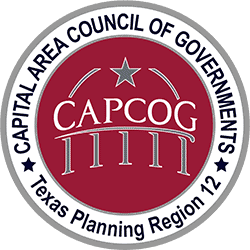Railroad Quiet Zones in the CAPCOG Region
A Quiet Zone is a section of railroad track where train horns are not routinely sounded at public highway-rail grade crossings. These zones must meet specific safety standards set by the Federal Railroad Administration (FRA).
CAPCOG maintains this map to visualize where Quiet Zones exist within the 10-county CAPCOG region. However, CAPCOG does not administer Quiet Zones and is not involved in their formal approval, enforcement, or compliance.
The information shown here is a filtered subset of the FRA’s Crossing Inventory (Form 71) dataset. It includes only public and private highway-rail crossings that are part of a designated Quiet Zone, based on the presence of a Quiet Zone ID.
Map of the CAPCOG Region's Quiet Zone Crossings
Understanding Quiet Zones
Quiet Zones are regulated by the FRA under federal rule 49 CFR Part 222. Local governments—not railroads— are responsible for initiating and maintaining a Quiet Zone designation. Establishing a Quiet Zone typically requires coordination among city or county officials, TxDOT (if applicable), and railroads.
What’s Required to Establish a Quiet Zone?
- The zone must be at least ½ mile long and include one or more public crossings.
- All public crossings must meet strict safety criteria or pass a risk assessment.
- A diagnostic inspection must be conducted by FRA, railroads, and local stakeholders.
- Formal notices must be submitted to the FRA (Notice of Intent and Notice of Establishment).
Ongoing Responsibilities for Local Governments
- Maintain infrastructure such as gates, medians, signs, and barriers.
- Submit periodic updates to the FRA (every 2.5 to 5 years, depending on safety measures).
- Monitor risk using the Quiet Zone Risk Index (QZRI) to ensure the zone remains compliant.
Why Quiet Zones Can Be Revoked
- Increased train or vehicle traffic pushes the QZRI above the national threshold.
- Required infrastructure falls into disrepair and is not fixed in a timely manner.
- Nearby road improvements alter traffic flow and increase crossing risks.
CAPCOG’s Role
- Support & Outreach: Helping cities and counties understand Quiet Zone obligations and procedures.
- Monitoring Assistance: Offering technical help in reviewing risk conditions or safety measures.
- Planning Coordination: Advising on infrastructure changes that may affect crossings.
CAPCOG does not regulate or approve Quiet Zones, but serves as a regional resource for information, best practices, and coordination support.
